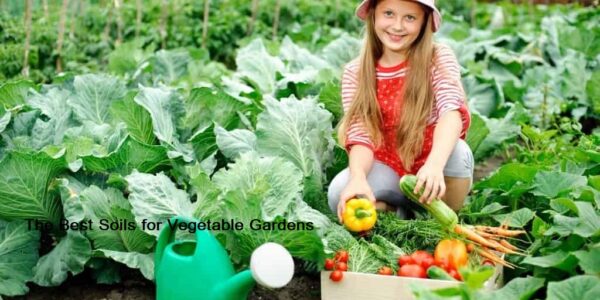The Best Soils for Vegetable Gardens
Good soil is essential to a successful garden. You should at least know your soil type and what plants will grow.
It’s also important to learn how to optimize your soil so you save money on unnecessary items. Knowing how to create a successful garden with less-than-ideal soil conditions couldn’t be easier.
How do you determine what type of soil? How can you make the soil more productive?
We will discuss common soil types and their profiles and how to find the best soil for vegetable gardening.
Soil types
clay
Clay soil is the worst choice for growing a garden. Who do you live with right now? This is a garden and garden scene. How to tell if your soil is clay?
If you see a thick substance, the soil is probably clay. You may also notice a slight reddish or orange color. If it is wet it will be sticky and sticky. Dry, it will be hard and heavy. You have great resistance when you dig. All these indicate that you have clay soil.
How can you fix clay soil? The good news is that you can make it work for you. However, it takes a lot of work. You need to add as much organic matter as possible. You need to aerate the soil, then top the soil with the first 2 inches.
Another option is to remove the top layer and install a garden bed. Then you can use raised garden beds in garden soil that is friendly to your garden without any heavy lifting.
Clay soil is best for certain types of vegetables
Shallow root vegetables grow in clay soils. You can grow the best plants in clay soil: broccoli, cauliflower, and bean varieties. Root vegetables such as carrots or daikon can be cultivated by breaking up the clay.
sandy soil
Sandy soil is exactly what it sounds like. It drains and dries quickly, and it keeps its shape well. Sandy soil is easier to amend than clay.
To make it work for your vegetable garden you need to remove sandy soil from your area. Then you need to add some composted soil and some organic matter. You can also incorporate grass clippings to help retain water.
Watch what you’re doing with your water to ensure optimal health. Your garden may need more water than you think. It’s a good idea to fertilize at the beginning and halfway through your growing season to ensure your plants have enough nutrients for your garden.
Many vegetables can grow in sandy soil. This is not a serious problem.
Many types of vegetables grow in sandy soils
Root vegetables include greens like carrots, parsnips, potatoes, lettuce or collards, as well as strawberries, a variety of peppers, and garden favorites like squash and zucchini.
silent land
Alluvial soil has a soft, powdery texture. Silt soils are finer and hold more moisture than sandy soils. It can become slippery when wet. It usually contains ‘run-off’ from other soils. It is between clay and sand.


 For all latest news, follow The carefulu Google News channel.
For all latest news, follow The carefulu Google News channel.





